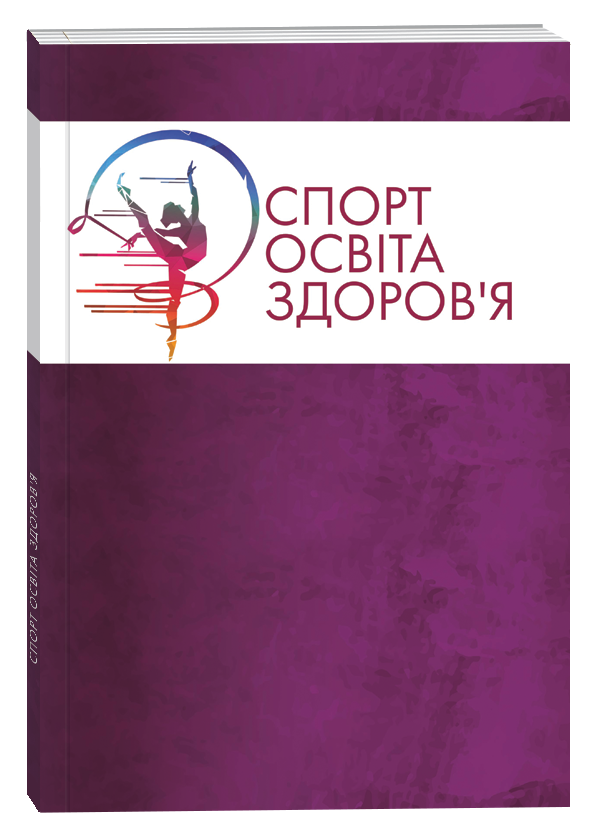RISK FACTORS FOR THE FORMATION AND DEVELOPMENT OF LOW ENERGY AVAILABILITY IN FEMALE ATHLETES
DOI:
https://doi.org/10.32782/sports-education/2025-2-12Keywords:
low energy availability, relative energy deficit, female athletes, health, sports activity, sports performance, nutrition, disordersAbstract
The growing focus on relative energy deficit (RED-s) in sport is driven by awareness and monitoring of athletes’ health. The International Olympic Committee emphasized the importance of understanding RED-s in 2014 and 2018. Low energy availability (LEA) is a key indicator for identifying risks, reflecting the remaining energy for physiological functions. RED-s and the “triad of women athletes” overlap as both issues relate to energy deficiency and eating disorders, where LEA is an integral indicator.The purpose of research is to study the risk factors for the formation and development of low energy availability in female athletes.Methods of research: bibliometric analysis of data from information resources on the Internet; method of categorization of information data; bibliographic analysis of data from information resources on the Internet; the method of mapping through the Litmaps application; comparative analysis.The results of the research. Although energy deficits continue to be the focus of research related to sports nutrition, it is clear that much remains to be done in this area. The following is a list of potential areas for further study: development of more effective screening tools to identify those at risk for the development and progression of RED-s; development of a better understanding for specific health and performance consequences on energy deficits across the spectrum of energy availability, including metabolic impairment, hormonal imbalances, menstrual dysfunction, loss of bone health, and poor immune response; evaluation of the time-dependent effects of different energy availability levels to understand how long an energy deficit can be maintained before health and performance declines; evaluation of the effectiveness of various educational interventions to educate athletes about the importance of nutritional strategies in sports practice.
References
1. 2023 International Olympic Committee’s (IOC) consensus statement on Relative Energy Deficiency in Sport (REDs) / M. Mountjoy et al. British Journal of Sports Medicine. 2023. Vol. 57, № 17. P. 1073–1097. URL: https://doi.org/10.1136/bjsports-2023-106994 (date of access: 22.05.2025).
2. Body Composition, Energy Availability, Training, and Menstrual Status in Female Runners / J.K. Ihalainen et al. International Journal of Sports Physiology and Performance. 2021. Vol. 16, № 7. P. 1043–1048. URL: https://doi.org/10.1123/ijspp.2020-0276 (date of access: 22.05.2025).
3. Contributing Factors to Low Energy Availability in Female Athletes: A Narrative Review of Energy Availability, Training Demands, Nutrition Barriers, Body Image, and Disordered Eating / A.R. Jagim et al. Nutrients. 2022. Vol. 14, № 5. P. 986. URL: https://doi.org/10.3390/nu14050986 (date of access: 22.05.2025).
4. Effect of High Dietary Restraint on Energy Availability and Menstrual Status / J.C. GIBBS et al. Medicine & Science in Sports & Exercise. 2013. Vol. 45, № 9. P. 1790–1797. URL: https://doi.org/10.1249/mss.0b013e3182910e11 (date of access: 22.05.2025).
5. Kuikman M.A., Mountjoy M., Burr J.F. Examining the Relationship between Exercise Dependence, Disordered Eating, and Low Energy Availability. Nutrients. 2021. Vol. 13, № 8. P. 2601. URL: https://doi.org/10.3390/nu13082601 (date of access: 22.05.2025).
6. Low Energy Availability Associated With Lower BMD And Bone Stress Injury Site In Female Athletes / B. Holtzman et al. Medicine & Science in Sports & Exercise. 2018. Vol. 50, № 5S. P. 742–743. URL: https://doi.org/10.1249/01.mss.0000538447.25598.4b (date of access: 22.05.2025).
7. Low Energy Availability, Disordered Eating, Exercise Dependence and Fueling Strategies in Trail Runners. International Journal of Exercise Science. 2023. Vol. 16, № 2. URL: https://doi.org/10.70252/ffdk5934 (date of access: 22.05.2025).
8. Low energy availability surrogates are associated with Relative Energy Deficiency in Sport outcomes in male athletes / B. Holtzman et al. British Journal of Sports Medicine. 2024. P. bjsports–2024–109165. URL: https://doi.org/10.1136/bjsports-2024-109165 (date of access: 26.05.2025)
9. Prevalence of disordered eating, eating disorders and risk of low energy availability in professional, competitive and recreational female athletes based in the United Kingdom / F.R.J. Sharps et al. European Journal of Sport Science. 2021. P. 1–7. URL: https://doi.org/10.1080/17461391.2021.1943712 (date of access: 22.05.2025).
10. Risk of low energy availability, eating disorders and food insecurity amongst development female rugby league players / A. Sharples et al. The Journal of Sports Medicine and Physical Fitness. 2024. URL: https://doi.org/10.23736/s0022-4707.24.15600-9 (date of access: 22.05.2025).
11. Study of Different Personalised Dietary Plans on Eating Behaviour, Body Image and Mood in Young Female Professional Handball Players: A Randomised Controlled Trial / L. Miralles-Amorós et al. Children. 2023. Vol. 10, № 2. P. 259. URL: https://doi.org/10.3390/children10020259 (date of access: 22.05.2025).
12. Litmaps | your literature review assistant. Litmaps | Your Literature Review Assistant. URL: https://www.litmaps.com/ (date of access: 01.03.2025).


